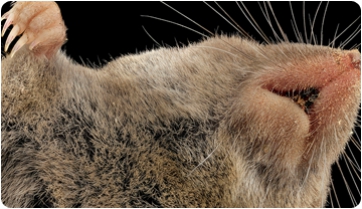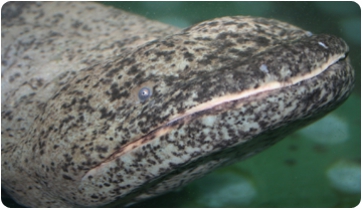ICP News
The analysis of a dinosaur trackway from the Barranco de la Canal (La Rioja) site reveals an injury in the left foot of an ornithopod dinosaur. The animal performed an abnormal gait probably due to the pain caused by the pathology. The investigation was led by researchers at the ‘Institut…
Pliobates cataloniae, a new primate species at the root of the tree of extant hominoids
29 Oct 2015
15825 times
A team of researchers from the ‘Institut Català de Paleontologia Miquel Crusafont’ describes in the Science magazine the new genus and species, Pliobates cataloniae, based on a skeleton recovered from the landfill of Can Mata (els Hostalets de Pierola, Catalonia, Spain). The fossil remains belong to an adult female individual…
Five species of flying squirrels that coexisted in the Vallès-Penedès basin during the Miocene, about 9.7 million years ago, have been described in the site known as Can Llobateres (in Sabadell, Catalonia). The finding, headed by Isaac Casanovas, researcher at the Institut Català de Paleontologia Miquel Crusafont , has been…
The jury awarded the prize to this American researcher at the proposal of the Institut Català de Paleontologia Miquel Crusafont and the Department of Ecology of the Universitat de Barcelona to recognize "its comprehensive influence for nearly five decades in a generation of ecologists". Ricklefs footprint in scientific thinking is…
Science publishes today a technical comment led by Sergio Almécija, paleontologist at the Institut Català de Paleontologia Miquel Crusafont (ICP). In this article, the authors refute the arguments previously published by a team at the University of Kent in the same journal, who attributed to the species Australopithecus africanus the…
ICP researcher Marc Furió publishes in the journal Comptes Rendus Palevol an article analyzing the remains ofDinosorex found in the Vallès-Penedès basin. This genus belonging to the order Insectivora is popularly known as the "Terror-shrew" because of its body size and huge incisors. The study reveals that Dinosorex lived in…
How the world's largest salamander feed? 3D technology at the service of ecology
07 Jul 2015
1690 times
The Chinese giant salamander (Andrias davidianus) is the largest amphibian in the world (Photo: Egon Heiss) An international team has developed three-dimensional models of the bite of the world's largest living amphibian, the Chinese giant salamander. The study, led by Josep Fortuny, researcher at the Institut Català de Paleontologia Miquel…
3D reconstruction of the skull and brain of Arenysaurus ardevoli Researchers at the Institut Català de Paleontologia Miquel Crusafont (ICP) have collaborated in the first three-dimensional reconstruction of the brain of Arenysaurus ardevoli, a European hadrosaur dinosaur species. Cranial material was CT-scanned and intracranial cavity, nerves and even the inner…
Workshops combine both theory and practice sessions (Transmitting Science) The Institut Català de Paleontologia Miquel Crusafont (ICP) and Transmitting Science have collaborated for years to provide a high-quality educational program addressed to active paleontologists and students, as well as researchers and specialists from related disciplines. Several topics are covered that…
Reconstruction of Struthiosaurus (Oscar Sanisidro / ICP) The study of the microstructure of the eggshell of Cairanoolithus conducted by Albert G. Sellés and Angel Galobart, both researchers at the Catalan Institute of Palaeontology Miquel Crusafont (ICP), reveals that this egg type does not belong to sauropod dinosaurs but to ankylosaurs,…

















